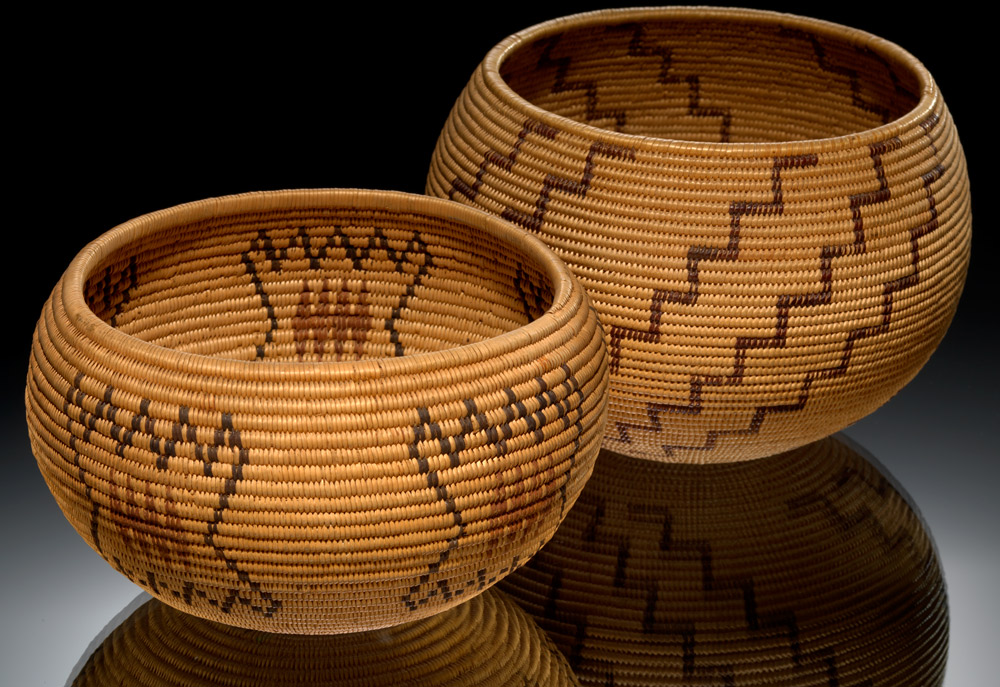
Dat so la lee (Dabuda or Louisa Keyser, Washoe, 1835–1925), degikup baskets
ca. 1895
Nevada
Willow
12 x 17 cm, 10 x 16 cm
Presented by Archer M. Huntington
Purchase
9/167, 11/8261
“Datsolalee, also known as Louisa Keyser (ca. 1829–1925), was a basket weaver of the southern Washoe group from the area around Carson City, Nevada. Her talent for weaving was recognized by Abe and Amy Cohn, who acted as her sponsors documenting each basket she produced and selling them to collectors. Datsolalee produced coiled baskets made of willow and used both bracken fern (black) and redbud (red) to form the design. She is most famous for developing the degikup basket style that consisted of a large spherical shaped basket with a flat base and a small opening. It is estimated that she produced nearly 300 baskets in her lifetime.”
—Erin Rentz, Karuk, 2009
Traditionally, Washoe utilitarian baskets, or degikup, were round, watertight baskets made to hold such things as acorn mush, pine nut soup, and a drink made from wild rhubarb. Degikup were also important in Washoe ceremonies. During the Washoe girls’ dance, food was put in degikup and given to singers in thanks for their singing; another degikup was thrown out to the dancers as a gift. These baskets were relatively simple in form and design—as were Dat so la lee’s first baskets. However, Dat so la lee transformed the shape and design of degikup, making truly aesthetic, sculptured baskets.
The basket with the hourglass design, somewhat unusual for a Dat so la lee basket because of its widely flared mouth, was made with willow foundation rods and thread. The hourglass design is woven with dyed bracken root, and the interior bear-paw motif is woven with redbud. Willows were found along the main watercourses in Washoe country, especially along the Carson River where Dat so la lee lived. The red branches (western redbud) used for the bear-paw motif were found in traditional Washoe lands along the hillsides in Woodfords Canyon and Lake Tahoe, and in Miwok country and other places along the western border of the California Sierras. The bracken-fern root used for the hourglass had to be dug up and dyed in dark mud before being woven in the basket design.
The basket with the bracken root woven into vertical columns is more typical of Dat so la lee’s work. It incorporates a more traditional design repeated around the basket.
—Jo Ann Nevers (Washoe), tribal historian, Washoe Tribe of Nevada and California

